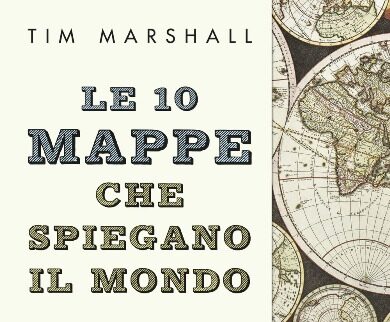Wars in 10 maps

“The 10 maps that explain the world” by Tim Marshall read by Tullio Fazzolari
The only certainty, after four months now, is that the war continues. Almost every day there are reports of boasted Russian successes and probable Ukrainian counterattacks. Nothing is clear on the development of the conflict while it is clear that any peace negotiation is struggling to get started. But, understandably, world attention is entirely concentrated on Ukraine and thus other events that threaten the international political scenario risk overshadowing. Disturbing alliances such as that between Russia and Iran are emerging. Libya is on fire again. China is not backing down from its intention to annex Taiwan. And as a result Japan, which is already the fifth largest military power in the world, is launching a gigantic weapons program.
“The 10 maps that explain the world” by Tim Marshall (Garzanti, 324 pages, 15 euros) makes known which are the outbreaks that could compromise the world balance. There are no catastrophic predictions in the book. Indeed, it is hoped that nothing will ever happen. But a compass is provided to orient oneself in the enormous and often chaotic mass of daily information. For example, reading a title that talks about the Senkaku Islands allows us to understand that this is the dispute between China and Japan which also involves Taiwan and the United States. It is the kind of back ground that was missing before the Russian aggression on Ukraine when, to be honest, not many people knew where the Donbass is.
Marshall, an English journalist who has been a war correspondent and foreign policy commentator for television, has a long experience acquired in the field during which he is convinced that without a knowledge of geography one is not able to understand history or even the news not to mention the complex international strategies. And to solve the problem Marshall uses the "maps" method in all his books. Without diminishing his work, it could be said that he re-evaluated and made the old system of the historical atlas that was used in school adequate to the times. An operation that is anything but trivial and, above all, of great use because it makes geopolitics more accessible.
With "The 10 maps that explain the world" (which in a few years has had seventeen editions) Marshall describes as many areas of criticality for internationals. It starts from Russia, which he had recently dealt with with another essay on the war in Ukraine. But in fact there is no corner of the planet that can feel completely safe from risks. Europe has internal problems which, behind a facade of unanimity, resurface whenever difficulties arise. The United States must decide how to reposition itself as a superpower. China does not know how to reconcile the ambitions of economic growth with those of territorial expansion. Even the North Pole must be monitored: the only one equipped to control it is Russia, but given the strategic importance of the Arctic it would be a threat to the rest of the world. And probably no one had noticed before reading Marshall.
This is a machine translation from Italian language of a post published on Start Magazine at the URL https://www.startmag.it/mondo/le-guerre-in-10-mappe/ on Sat, 16 Jul 2022 07:34:03 +0000.
